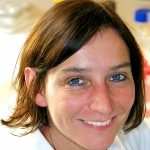Link to Pubmed [PMID] – 12006597
J. Biol. Chem. 2002 Jul;277(28):25133-42
The Yop virulon, which comprises a complete type III secretion system and secreted proteins, allows bacteria from the genus Yersinia to resist the nonspecific immune response of the host. This virulon, which is encoded by a plasmid called pYV in Yersinia enterocolitica, enables extracellular bacteria to inject six Yop effectors (YopE, -H, -T, -O, -P, -M) into the host cell. To investigate the role of YopP, YopM, and the other pYV-encoded factors on the expression of the host cell genes, we characterized the transcriptome alterations in infected mouse macrophages using the microarray technique. PU5-1.8 macrophages were infected either with an avirulent (pYV(-)), a wild type (pYV(+)), or two knockout (yopP(-) and yopM(-)) mutants of Y. enterocolitica. Expression alterations in response to Y. enterocolitica infection were monitored for 6657 genes. Among those, 857 genes were affected, 339 of which were specifically regulated by the action of the Yop virulon. Further analysis of those 339 genes allowed identification of specific targets of YopP, YopM, or the other pYV-encoded factors. According to these results, the main action of the Yop virulon is to counteract the host cell pro-inflammatory response to the infection. YopP participates to this inhibition, whereas another pYV-encoded factor appears to also be involved in this down-regulation. Besides, YopM was found to induce the regulation of genes involved in cell cycle and cell growth, revealing for the first time an in vitro effect for YopM. In addition to YopM, other pYV factors distinct from YopP affected the expression of genes involved in cycling. In conclusion, these results provide new insight into the mechanisms of Yersinia pathogenicity by identifying the changes in host genes expression after infection and highlight the concerted actions of the different Yop effectors.

